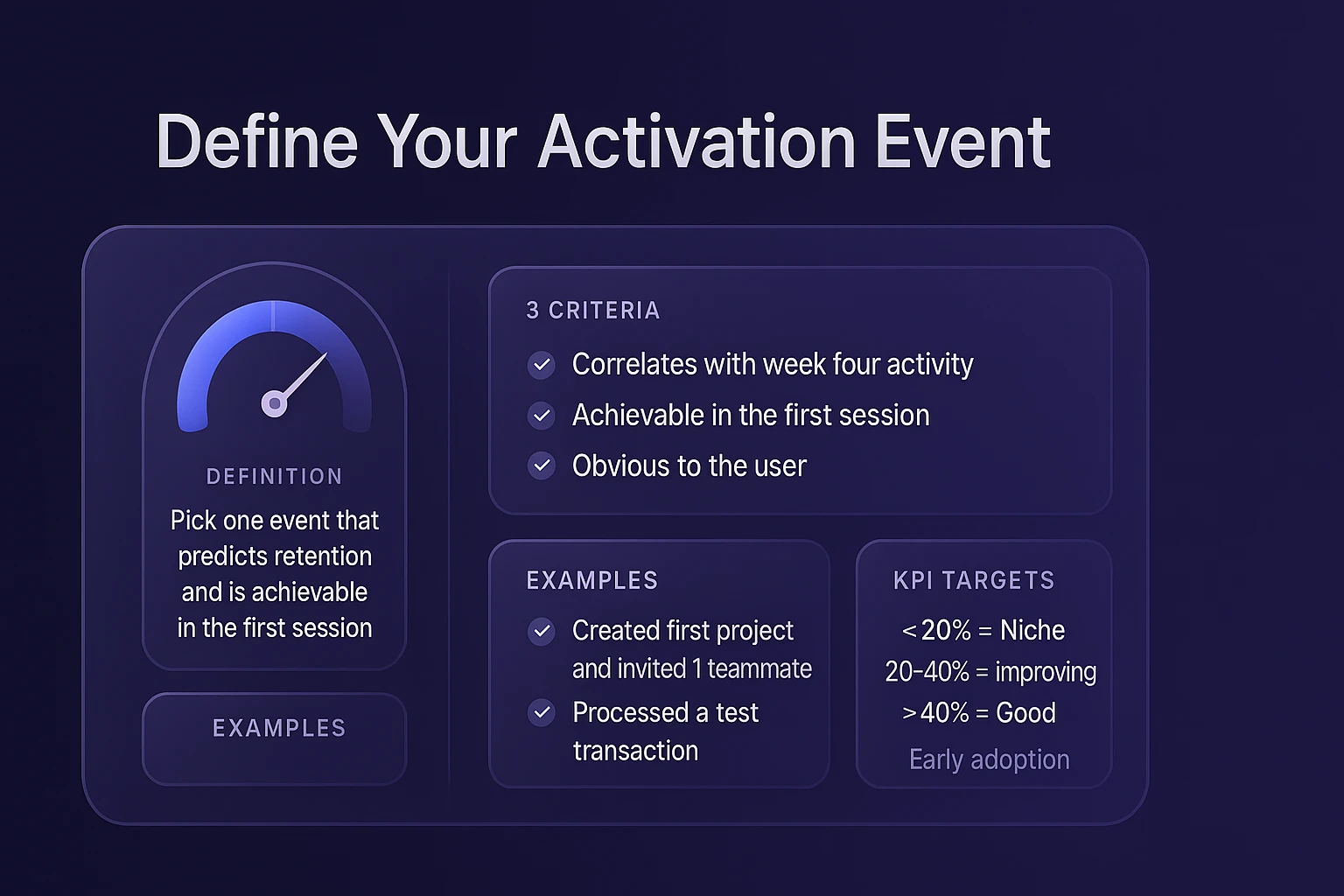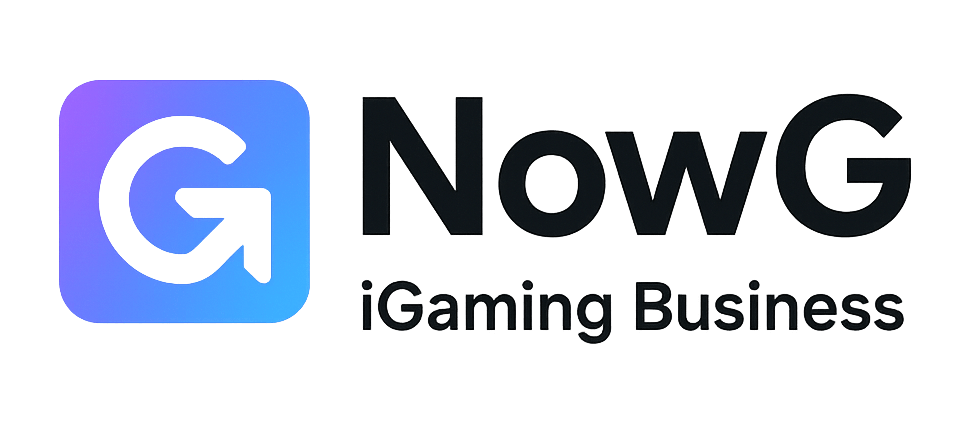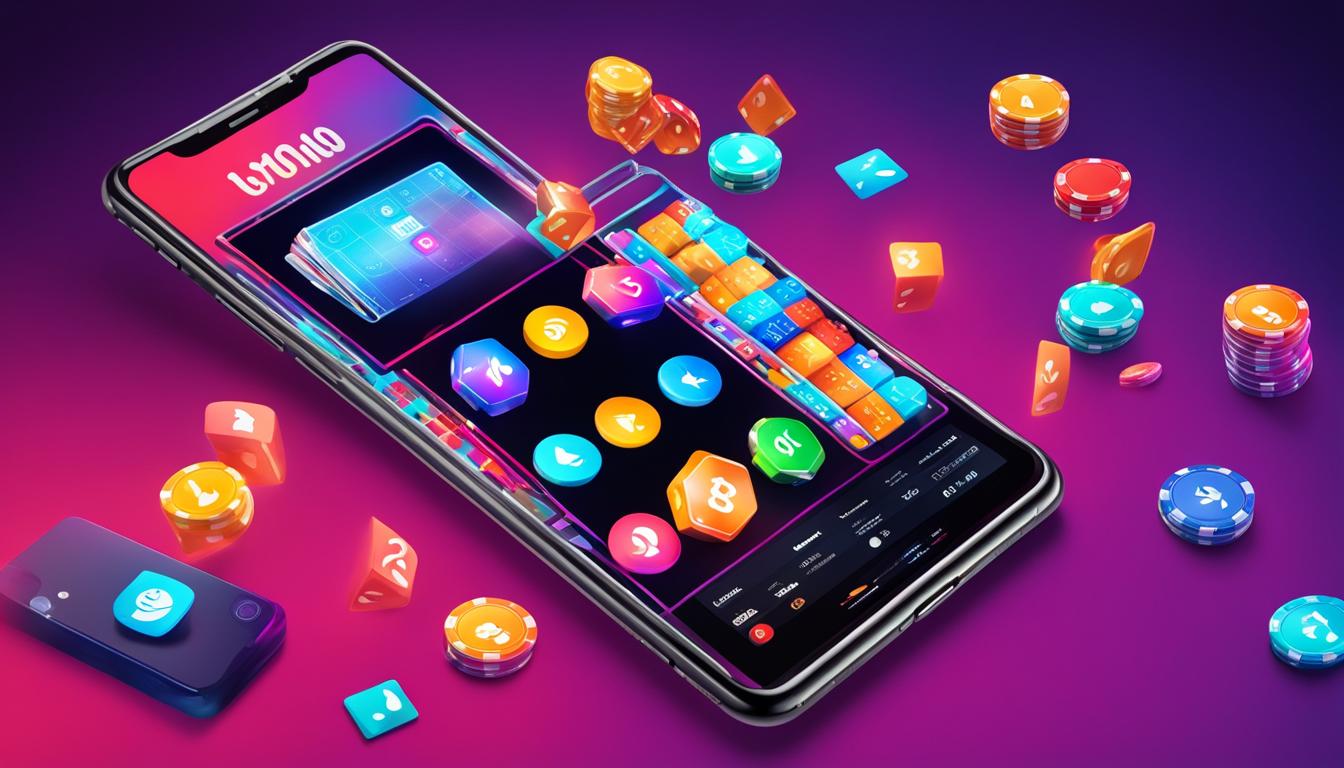Great SaaS onboarding turns signups into stickiness. It shrinks time to value, reduces early churn, and lifts expansion revenue by putting the right guidance, at the right time, in the right channel. Below, you’ll find ten standout onboarding experiences—each mapped step-by-step—plus the frameworks, checklists, and metrics you can borrow to level up your own flow.
👉 How to use this guide: Each example includes the first-run path, key triggers, lifecycle messaging, in-product education, and the “Aha!” moment. Use the teardown sections as templates—swap your product nouns and your data sources.
Our evaluation
| Dimension | What we looked for | Benchmarks |
|---|---|---|
| Time to value | Fast path to a meaningful first outcome | < 10 minutes to first success for SMB tools |
| Guidance | Contextual, progressive hints, not walls of text | 3 to 5 steps to first Aha |
| Personalization | Flows adjust by role, job-to-be-done, plan | 1 screen of intent capture, dynamic checklist |
| Lifecycle messaging | Helpful nudges across email, in-app, chat | Triggered within 5 minutes of key events |
| Activation metric | Clear definition and visibility to user | Shown as a progress bar or checklist |
| Education | Micro-tours, tooltips, self-serve academy | Short 30- to 60-second moments |
| Data and imports | Frictionless sample data or one-click import | CSV and native integrations |
The 10 mapped onboarding experiences
1. Notion-style workspace onboarding
Why it works: Notion reduces choice paralysis. You land inside a living workspace with sample content, a left rail of templates, and a single, clear prompt to “create your first page.”
First-run path: Sign up → pick use case (notes, wiki, project) → auto-provision workspace with matching templates → Highlight the “New Page” button → show a 3-step micro-tour the first time you add text, an image, and a database.
Key triggers: created first page, added first property to a table, invited collaborator.
Mapped Aha: First page created with one linked database view. That is the moment users see structure plus flexibility.
Lifecycle messaging: Instant in-app tip when a page is blank. Email within 10 minutes with three template suggestions based on intent. A day two nudge to invite a teammate.
What to borrow: Ship with sample content. Give one button to press. Let the first success live inside the real product, not a tutorial sandbox.
2. Slack-style collaborative activation
Why it works: Slack defines activation as sending messages with teammates, not just creating a workspace. Onboarding orbits around getting the first five people talking.
First-run path: Create workspace → pick a channel template → invite colleagues by email or share the link. → post first message via auto-suggested prompt → The bot posts a quick guide in the channel.
Key triggers: First 10 messages, 2 channels created, 3 teammates active on the same day.
Mapped Aha: 3 people in one channel, reacting and replying. Social proof and momentum kick in.
Lifecycle messaging: Immediately DM from the product bot with keyboard shortcuts and first steps. Email on day one showing missed invites and a one-click reinvite.
What to borrow: Make the first success a shared action. Your onboarding should create reasons to invite, not just fields to fill.
3. Figma-style multiplayer onboarding
Why it works: Multiplayer cursors and live presence deliver instant value. Even a new user feels the power once a teammate joins and edits.
First-run path: Choose “Design” or “Whiteboard” → open starter file with pre-labeled layers → tooltip shows how to share → On open, a bot cursor demonstrates move, comment, and frame actions.
Key triggers: first share, first comment, first component created.
Mapped Aha: A teammate’s cursor edits your frame while a comment thread resolves in real time.
Lifecycle messaging: Email with a short video clip of your first file and a link to duplicate a community template. The in-app checklist displays remaining actions to unlock the team library.
What to borrow: Animate the value. If your product shines with collaboration, script a moment where collaboration is inevitable.
4. Canva-style template-first creation
Why it works: Canva collapses blank page fear. You pick an intent, and the editor opens with a polished template and contextual tips.
First-run path: Select use case → curated template grid → click to open. → inline coach marks for replace image, edit text, and export.
Key triggers: Exported first design, used brand colors, shared design link.
Mapped Aha: Replacing one image auto-adapts the layout. The user sees pro results without design skills.
Lifecycle messaging: The export confirmation email includes resizing tips and a nudge to set the brand kit.
What to borrow: Lead with outcomes, not editors. Your first screen should promise a finished artifact.
5. Airtable-style sample data and views
Why it works: People understand their work through data. Airtable drops you into a base with real-looking sample rows and lets you toggle views to discover power.
First-run path: Pick a base template → auto-populated records → top bar tour highlights Grid, Kanban, and Calendar → import CTA appears contextually.
Key triggers: first import, first linked record, first automation.
Mapped Aha: Switch to Kanban and watch sample tasks snap into swimlanes. Visual payoff is immediate.
Lifecycle messaging: Email with import options and a CSV template. In-app banner offers to build your first automation with a wizard.
What to borrow: Ship believable sample data. Then let users see three different views of the same data in seconds.
6. Intercom-style conversational onboarding
Why it works: Intercom uses Intercom. New users experience the messenger, tours, and product tours as customers would.
First-run path: Set goal (support, sales, marketing) → guided installation of messenger snippet → send test message → preview tour builder.
Key triggers: first conversation, first tour published, first segment created.
Mapped Aha: Seeing your own message pop up on your website within minutes.
Lifecycle messaging: Real-time chat from a human during setup, plus a 24-hour recap email showing conversations and suggested automations.
What to borrow: Onboard with your own product. The demo should be the doing.
7. Stripe-style developer-forward onboarding
Why it works: Stripe eliminates unknowns for developers. Clear keys, copyable snippets, and a lightning-fast test environment create early wins.
First-run path: Create account → dashboard highlights test keys → Quickstart shows a runnable curl example → the webhook test tool validates events.
Key triggers: first test charge, webhook received, first successful live payment.
Mapped Aha: The test charge appears instantly in the dashboard with all the right metadata. Confidence unlocked.
Lifecycle messaging: Transaction digest emails with links to docs that match your language binding. Security checklist as a gated step before going live.
What to borrow: Remove risk with tight test loops. Show both sides of the flow: request and result.
8. Webflow-style no-code scaffolding
Why it works: Webflow pairs a powerful canvas with pre-built structures. The user edits something that already looks like a website, not a blank grid.
First-run path: Choose template → enter site name → the first guided animation teaches the box model while you actually change your hero section.
Key triggers: first publish, first CMS collection, first form submission.
Mapped Aha: Clicking Publish and opening a real, public URL in under five minutes.
Lifecycle messaging: Email with your live link, plus a checklist to add a custom domain and SEO basics.
What to borrow: Let users ship something visible on day one. Public proof is a retention flywheel.
9. Miro-style visual collaboration
Why it works: Infinite canvas, sticky notes, and cursors that feel playful. Miro lowers friction with templates like retros, user journeys, and flowcharts.
First-run path: Pick a board template → add the first sticky via tooltip → invite a collaborator with a one-click share link → a comment prompt appears automatically.
Key triggers: Two collaborators online, first template saved as custom, export to image.
Mapped Aha: Watching a teammate move a sticky while you type on another. It’s jointly owned work, instantly.
Lifecycle messaging: Weekly digest with board views, collaborators, and a nudge to try timers, voting, or frames.
What to borrow: Design for momentum. Every completed action should suggest the next one.
10. Asana-style goal-linked onboarding
Why it works: Asana connects tasks to goals. Onboarding keeps reminding you why you’re setting up: to move a measurable objective.
First-run path: Pick a team and project template → create the first task assigned to yourself → create a goal and link tasks → invite collaborators.
Key triggers: first 5 tasks created, first goal updated, first automation rule enabled.
Mapped Aha: A goal percentage ticks up when your first task completes. Progress becomes tangible.
Lifecycle messaging: Calendar-based reminders to close tasks and a Friday summary that ties task completion to the goal delta.
What to borrow: Anchor onboarding to outcomes. Always draw a line from setup to success metrics.
Side-by-side comparison
| Product | Primary Aha | Activation proxy metric | Personalization lever | Signature tactic |
|---|---|---|---|---|
| Notion | First page with a database | 1 page created plus 1 property | Use case selection | Template starter workspace |
| Slack | First real-time conversation | 3 teammates posting in a channel | Channel templates | Bot-led guidance |
| Figma | Live co-editing | First share plus first comment | File type choice | Multiplayer demo cursor |
| Canva | Export a polished design | First export or share | Intent-driven template grid | Inline coach marks |
| Airtable | Data viewed multiple ways | First import plus second view | Base templates | Photorealistic sample data |
| Intercom | Messenger live on site | First conversation | Goal-based setup | Onboard with your own product |
| Stripe | First test charge | Webhook received | Language quickstarts | Copyable snippets |
| Webflow | Published site | First publish | Template choice | Ship something day one |
| Miro | Shared board momentum | Two collaborators online | Board templates | Playful sticky flow |
| Asana | Goals move with tasks | 5 tasks plus 1 goal | Team and project presets | Goal-linked checklist |
Frameworks you can steal

Define your activation event
Pick one event that predicts retention. It should correlate with week four activity, be achievable in the first session, and be obvious to the user. Examples: created first project and invited 1 teammate, processed a test transaction, published first artifact.
Design a three-step path
From sign-up to first success in <10 minutes
Keep it to three guided actions. Auto-advance. Show progress. Make the “Aha!” unavoidable.
Create or Import
Open with a preloaded template or believable sample data. One click to import if ready.
Personalize
Ask one intent question (role/JTBD). Auto-apply defaults: template, settings, email track.
Share or Publish
One-tap invite or publish. Show a visible win (URL live, teammate cursor, first event in dashboard).
On mobile or desktop, three guided steps are plenty: import or create, personalize, and share or publish. Use a progress bar that mirrors these steps, and auto-advance as users complete them without clicks.
Personalize at the door
Ask one intent question on signup, not a survey. Use the answer to preload templates, default settings, and email sequences. Personalization is the antidote to choice paralysis.
Make education invisible
Use micro-tours, gentle tooltips, and self-serve academies. Never ship a modal wall of text. Education should feel like progress, not homework.
Treat email as a continuation, not a recap
Transactional emails should move users forward. Include one primary button that returns them exactly where they left off, pre-filled. Send it within five minutes of the trigger.
Metrics that matter in onboarding
| Metric | Definition | Good early target |
|---|---|---|
| Activation rate | Signups who hit activation event in 7 days | 35 to 60 percent for product-led SMB tools |
| Time to value | Median minutes from signup to activation | < 10 minutes |
| Guided completion | Percent completing all steps in checklist | 50 percent plus |
| Invite rate | Percent inviting at least one collaborator | 25 to 40 percent |
| Onboarding churn | Users who never return after day one | < 30 percent |
Common pitfalls: long forms at signup, mandatory demos before value, sending users to docs instead of doing the thing, gating collaboration, and hiding the activation definition from the user.
Onboarding teardown templates
Template A. creation product
Aha target: Publish or export a first artifact.
Steps: Choose template → edit two elements → publish or export. The progress bar shows 1 of 3, 2 of 3, and 3 of 3. Each step autocompletes on action.
Messaging: Immediate email with the artifact link and two next-step tips.
Template B. collaboration product
Aha target: Two people active in the same object.
Steps: Create project → invite teammate → complete one shared action. Provide a one-tap invite link that works without IT friction.
Template C. API product
Aha target: Successful test call and webhook receipt.
Steps: Get keys → run copyable call in a live code block → see a dashboard event appear. Provide code in multiple languages by default.
Real-world implementation notes
Progress bars beat checklists when users are impatient. Bars convey motion with less cognitive load. Use checklists when steps require reading or branching choices.
Sample data outruns CSV imports on day one. Many users don’t have clean files handy. Let them play first, import later.
Speed is part of UX. A three-second delay at first paint can cut activation. Preload the first template so it opens instantly.
Teammates are features. Every onboarding should include at least one prompt to invite, with a compelling reason baked in.
Make the default path the successful path. Advanced options belong behind “show more.” Defaults should carry a user to value without decisions.
Operational checklist
- Define one activation event and show it to users as a goal
- Cut first-run steps to three and instrument each step
- Personalize with one intent question at signup
- Deliver sample data or templates by default
- Trigger an email or message within five minutes after each key action
- Invite collaborators early with a one-click link
- Review activation cohorts weekly and run one experiment at a time
FAQs
Conclusion
Great onboarding is not a tour. It is a carefully staged first success that makes the second success obvious. The best SaaS teams keep the path short, the guidance contextual, the win visible, and the outcome shared. Map your Aha, remove one decision at every step, and let the product teach by doing. Your activation rate—and your customers—will thank you.




